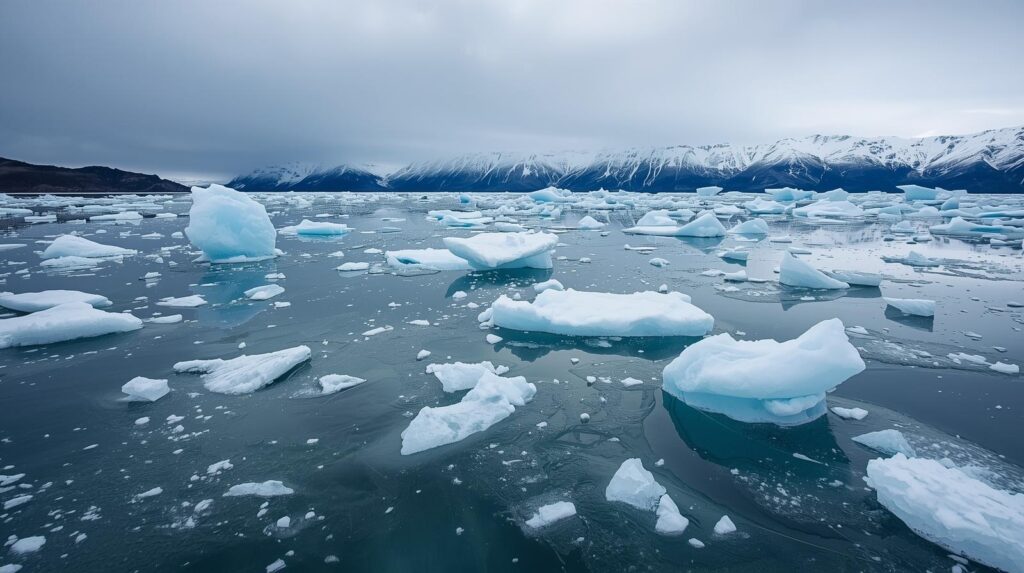Alaska’s vast icy landscapes are not just breathtakingly beautiful; they are also a potential goldmine for renewable energy. With the growing need for sustainable energy solutions, ice energy technology is emerging as a promising avenue. In this article, we will explore how Alaska’s ice can be harnessed for renewable energy, the technologies involved, and the potential impact on various industries.
The Promise of Ice Energy Technology
Alaska’s ice has long been a subject of fascination for scientists and adventurers alike. However, recent advancements in technology have opened up new possibilities for using ice as a renewable energy source. Ice energy technology involves capturing the thermal energy stored in ice and converting it into electricity.
How Ice Energy Technology Works
Ice energy technology is based on the principle of phase change. As ice melts, it absorbs a significant amount of heat, which can be harnessed using heat exchangers and other equipment. This heat is then converted into usable energy through various methods, such as turbines or thermoelectric generators.
The process is akin to geothermal energy, where heat from the Earth’s core is used to generate power. However, in the case of ice energy, the source of heat is the latent heat released during the melting of ice.
Why Alaska?
Alaska is uniquely positioned to become a leader in ice energy technology. Its vast ice reserves and cold climate make it an ideal location for implementing and testing this renewable energy source. Moreover, the state’s commitment to reducing its carbon footprint aligns well with the goals of developing sustainable energy solutions.
The Potential Impact on Industries
The adoption of ice energy technology in Alaska could have far-reaching implications for various sectors. Here are some ways it could influence different industries:
Energy Sector
The most direct impact would be on the energy sector. Ice energy technology could provide a new, sustainable source of electricity, reducing reliance on fossil fuels. This shift could lead to lower energy costs and a more stable energy supply, particularly in remote regions of Alaska where traditional energy sources are scarce.
Tourism and Hospitality
Alaska’s tourism industry could also benefit from ice energy technology. As the state becomes a pioneer in renewable energy, it could attract more eco-conscious travelers interested in visiting a region that prioritizes sustainability. Hotels and resorts could leverage ice energy to offer environmentally friendly accommodations, enhancing their appeal to green-minded tourists.
Technology and Innovation
The development and implementation of ice energy technology could spur innovation in related fields. Companies specializing in renewable energy equipment, thermoelectric generators, and heat exchangers could find new opportunities for growth. Additionally, the technology could inspire further research into other unconventional energy sources, driving overall innovation in the renewable energy sector.
Challenges and Limitations
While the potential benefits of ice energy technology are significant, there are also challenges to consider. Developing and scaling this technology will require substantial investment and research. Additionally, the environmental impact of large-scale ice melting must be carefully managed to avoid unintended consequences.
Technical Challenges
One of the primary technical challenges is efficiently capturing and converting the thermal energy from ice. The equipment needed for this process must be both effective and resilient to the harsh conditions of the Arctic environment. Furthermore, integrating this energy source into existing power grids will require careful planning and coordination.
Environmental Considerations
The melting of ice is a natural process, but accelerating it for energy production could have ecological impacts. It is crucial to balance the benefits of ice energy with the need to preserve natural habitats and prevent adverse effects on local ecosystems.

Forward-Thinking Strategies for Implementation
To successfully harness Alaska’s ice for renewable energy, strategic planning and collaboration across sectors will be essential. Here are some strategies to consider:
Collaboration and Partnerships
Establishing partnerships between government agencies, research institutions, and private companies can accelerate the development and deployment of ice energy technology. Collaborative efforts can pool resources, share expertise, and create a unified approach to overcoming challenges.
Investment in Research and Development
Investing in research and development is crucial to advancing ice energy technology. Funding initiatives focused on improving the efficiency and sustainability of this energy source can lead to breakthroughs that make it more viable for widespread use.
Policy Support and Incentives
Government support through policies and incentives can encourage the adoption of ice energy technology. Tax breaks, grants, and subsidies can make it more attractive for companies to invest in this renewable energy source, driving innovation and growth in the sector.
Conclusion
Harnessing Alaska’s ice for renewable energy represents a frontier of opportunity in the quest for sustainable power solutions. While there are challenges to overcome, the potential benefits for the energy sector, tourism, and technological innovation are immense. By investing in ice energy technology and fostering collaboration, Alaska can lead the way in pioneering new renewable energy sources, setting a precedent for other regions to follow.
As we look to the future, the exploration of ice energy technology highlights the importance of innovation in addressing global energy challenges. By embracing this cutting-edge approach, we can move closer to a sustainable future, where renewable energy solutions are an integral part of our everyday lives.




